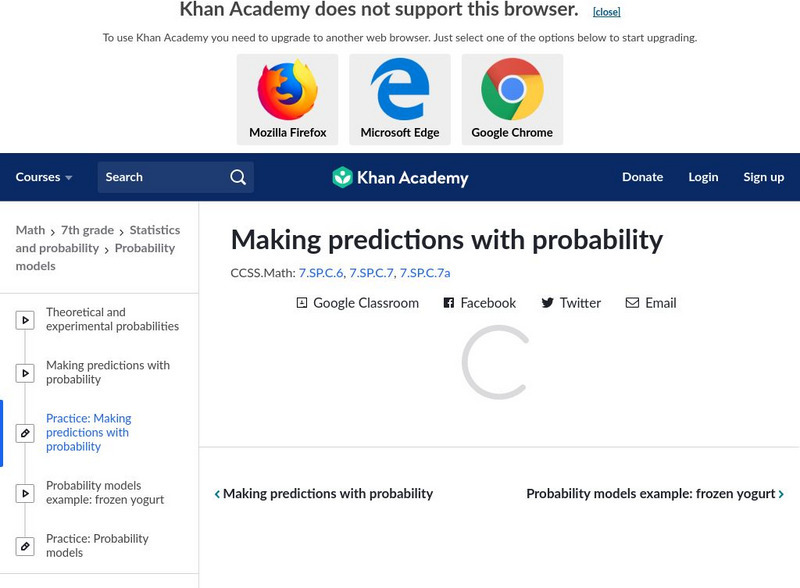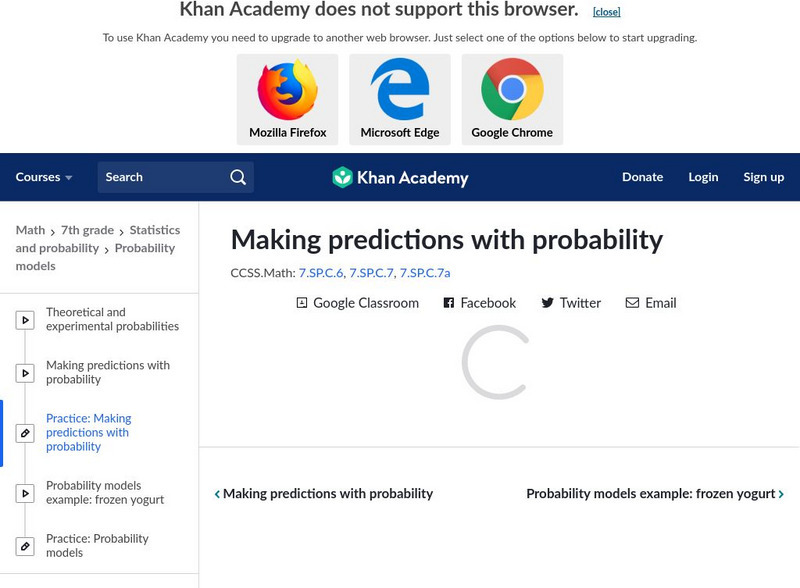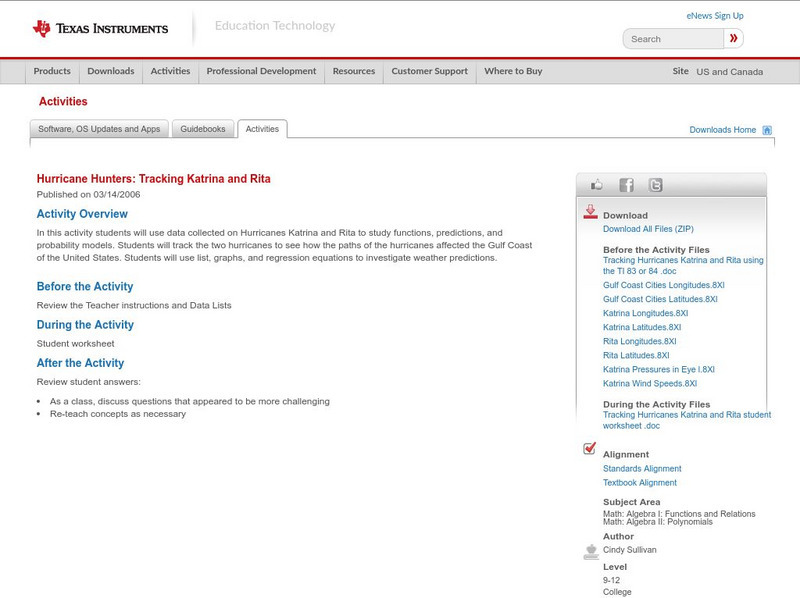Hi, what do you want to do?
Curated OER
One Square Foot
Students identify, describe, count, tally, and graph life found in one square foot of land.
Curated OER
Chapter 11 What's Your Preference
In this math worksheet, students record the results of a survey taken from family members about relationships and activities.
Curated OER
Terrarium Observation
Students observe the growth of plants in their terrarium. In this social studies lesson, students measure plant growth for several weeks. They predict what happens if other organisms are added in the terrarium.
Curated OER
Planning for a Healthy Life
Young scholars investigate the difference between diseases that are controllable and those that happen by chance. They discuss the chance of dieing in a war with that of dieing from a disease that has controllable factors. They complete...
Curated OER
A Leap of Space
Students explore how smaller systems exist within larger systems as they build a collage of their place in space! Invite the students to display their posters and talk about their systems and systems of systems.
Curated OER
Ireland Quiz #3
In this Ireland quiz #3 learning exercise, students answer 20 trivia-style questions about Ireland, not interactively, then scroll down to check their answers.
Curated OER
Modern Physics, New Phenomena
In this physics worksheet, high schoolers examine some of the historical theories of physics through the completion of 11 questions.
Curated OER
The Fair Factor
Students participate in playing many games to determine if they are fair or not. They create their own game that is fair to play with their classmates.
Curated OER
M&M Exponential Activity
Students create a scatter plot of their experimental data. In this algebra instructional activity, students use M&M's to determine an algebraic model. They discuss results in class.
Curated OER
Figuring Elapsed Time
Students discover the concept of elapsed time. In this calculating time lesson plan, students utilize the Internet to complete record sheets based on the concept of elapsed time. Finally, the students answer questions on their own.
Curated OER
School-Wide Recycling
Students investigate recycling. In this environmental lesson, students design a recycling program for their school. Students collect data about how much recyclable materials they use in one week. Students also survey classmates about how...
Curated OER
Greenhouse Effect
Students investigate the greenhouse effect. In this environmental lesson, students investigate why the greenhouse effect changes the climate through an experiment. Students use vinegar to simulate how acid damages the environment.
Curated OER
Deep Blue: Exploring the Deep Ocean
Students examine landforms. In this social studies lesson, students bounce a beach ball around in order to discover that seventy percent of the Earth is covered in water. Students
Curated OER
HOW BIG IS A BLUE?
Students compare the lengths of whales using different lengths of rope. They illustrate one whale in life-size proportion.
Curated OER
Intermediate Sentence Completion Exercise 35
In this intermediate sentence completion exercise 35 worksheet, middle schoolers working online, choose the correct word(s) to complete the sentence, with immediate feedback.
Khan Academy
Khan Academy: Making Predictions With Probability
Practice making predictions with probability with these problems.
Khan Academy
Khan Academy: Making Predictions With Probability
Practice predicting the number of times a certain event will happen. Students receive immediate feedback and have the opportunity to try questions repeatedly, watch a video or receive hints.
Beacon Learning Center
Beacon Learning Center: Who Will Probably Come to the Party?
Students use tree diagrams to find possible outcomes and make predictions for probability story problems.
Texas Education Agency
Texas Gateway:using Theoretical and Experimental Probability to Make Predictions
Given an event to simulate, the student will use theoretical probabilities and experimental results to make predictions and decisions.
Beacon Learning Center
Beacon Learning Center: Lions, Tigers, and Probability
Students explore the probabilities of simple events, such as rolling a dice, in this interactive web lesson.
Texas Instruments
Texas Instruments: Hurricane Hunters: Tracking Katrina and Rita
In this activity students can use data collected on Hurricanes Katrina and Rita to study functions, predictions, and probability models. Students will track the two hurricanes to see how the paths of the hurricanes affected the Gulf...
PBS
Pbs Lesson Plan: Chances Are Talking Probability (Pdf) [Pdf]
An introductory lesson in probability for students in grades three to five. The concepts presented in this lesson are interwoven, over time, into a current unit of study. Students examine closely the "language" of probability as used in...
Texas Education Agency
Texas Gateway: Exploring Probability With Independent Events
Given a problem situation, students will use experimental data or theoretical probability to make predictions and determine solutions to situations involving independent events.
Cuemath
Cuemath: Probability
A comprehensive guide for learning all about probability with definitions, basics of probability, terms used in probability, probability formula, conditional probability, probability distribution, probability density function, law of...


























![Pbs Lesson Plan: Chances Are Talking Probability (Pdf) [Pdf] Unknown Type Pbs Lesson Plan: Chances Are Talking Probability (Pdf) [Pdf] Unknown Type](https://static.lp.lexp.cloud/images/attachment_defaults/resource/large/FPO-knovation.png)
